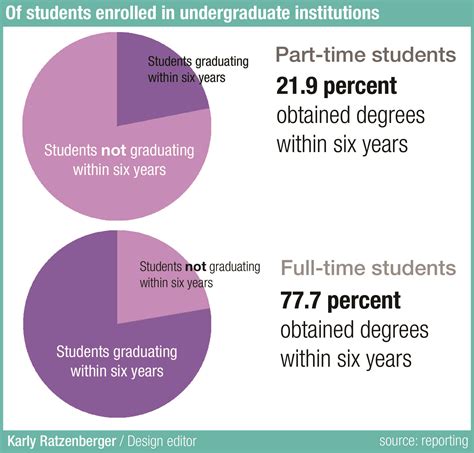Defining Part-Time Enrollment

Determining whether a student is considered part-time is typically based on the number of credit hours they enroll in during a specified academic term. The definition may vary slightly depending on the institution and the level of education.
In general, part-time students are those who enroll in less than the full-time course load defined by their institution. For undergraduate students, this usually means:
- Less than 12 credit hours per semester or quarter
- Less than 9 credit hours per trimester
For graduate students, part-time enrollment typically involves:
- Less than 9 credit hours per semester or quarter
- Less than 6 credit hours per trimester
Benefits and Considerations
Part-time study offers several advantages, including:
- Flexibility: Allows students to balance their studies with other commitments such as work or family responsibilities.
- Affordability: May be more financially feasible for students with limited resources.
- Personalized Learning: Can provide more individualized attention from instructors due to smaller class sizes.
However, part-time students should also consider potential disadvantages, such as:
- Longer Time to Completion: It takes longer to complete a degree program compared to full-time students.
- Fewer Course Options: May have a narrower selection of courses to choose from, especially during peak enrollment periods.
- Limited Access to Services: Some student services, such as tutoring and career counseling, may be less accessible to part-time students.
Impact on Financial Aid
Part-time enrollment status can affect eligibility for financial aid. In general:
- Undergraduate Students: Students may receive up to a proportional amount of Pell Grant and other need-based aid based on their enrollment status.
- Graduate Students: Part-time students are typically not eligible for federal student loans, but may qualify for graduate assistantships or other funding sources.
Determining Your Status
To determine your part-time status, contact the admissions or registrar’s office at your institution. They will provide you with the specific criteria for your program and level of education.
Key Statistics on Part-Time Enrollment
According to the National Center for Education Statistics (NCES):
- In 2020, over 6.4 million students were enrolled part-time in postsecondary institutions in the United States.
- Part-time enrollment accounted for approximately 34% of all postsecondary enrollments.
- The majority of part-time students (64%) were female, and over half (52%) were over the age of 25.
Strategies for Success as a Part-Time Student
- Set Realistic Goals: Determine how many courses you can realistically handle while balancing your other commitments.
- Create a Schedule: Establish a consistent study schedule that allows you to allocate time for classes, coursework, and personal obligations.
- Prioritize Coursework: Identify the most important courses and focus your efforts on those first.
- Seek Support: Reach out to professors, classmates, or campus support services if you need help.
- Take Advantage of Technology: Utilize online learning platforms, virtual office hours, and other tools to enhance your learning experience.
Tables for Reference
Table 1: Part-Time Enrollment Definitions
| Level of Education | Less than (per semester or quarter) |
|---|---|
| Undergraduate | 12 credit hours |
| Graduate | 9 credit hours |
Table 2: Benefits and Considerations of Part-Time Study
| Benefits | Considerations |
|---|---|
| Flexibility | Longer Time to Completion |
| Affordability | Fewer Course Options |
| Personalized Learning | Limited Access to Services |
Table 3: Impact of Part-Time Enrollment on Financial Aid
| Type of Aid | Undergraduate | Graduate |
|---|---|---|
| Pell Grant | Proportional award | Not eligible |
| Federal Student Loans | Not eligible | May qualify for assistantships |
Table 4: Strategies for Success as a Part-Time Student
| Strategy | Description |
|---|---|
| Set Realistic Goals | Determine a manageable number of courses to enroll in. |
| Create a Schedule | Establish a consistent study schedule that accommodates your other commitments. |
| Prioritize Coursework | Focus your efforts on the most important courses first. |
| Seek Support | Reach out to professors, classmates, or campus support services for help. |
| Utilize Technology | Use online learning platforms and other tools to enhance your learning experience. |
